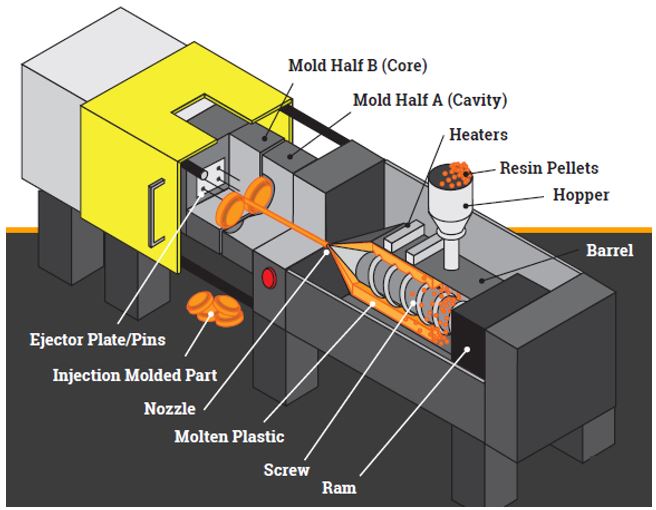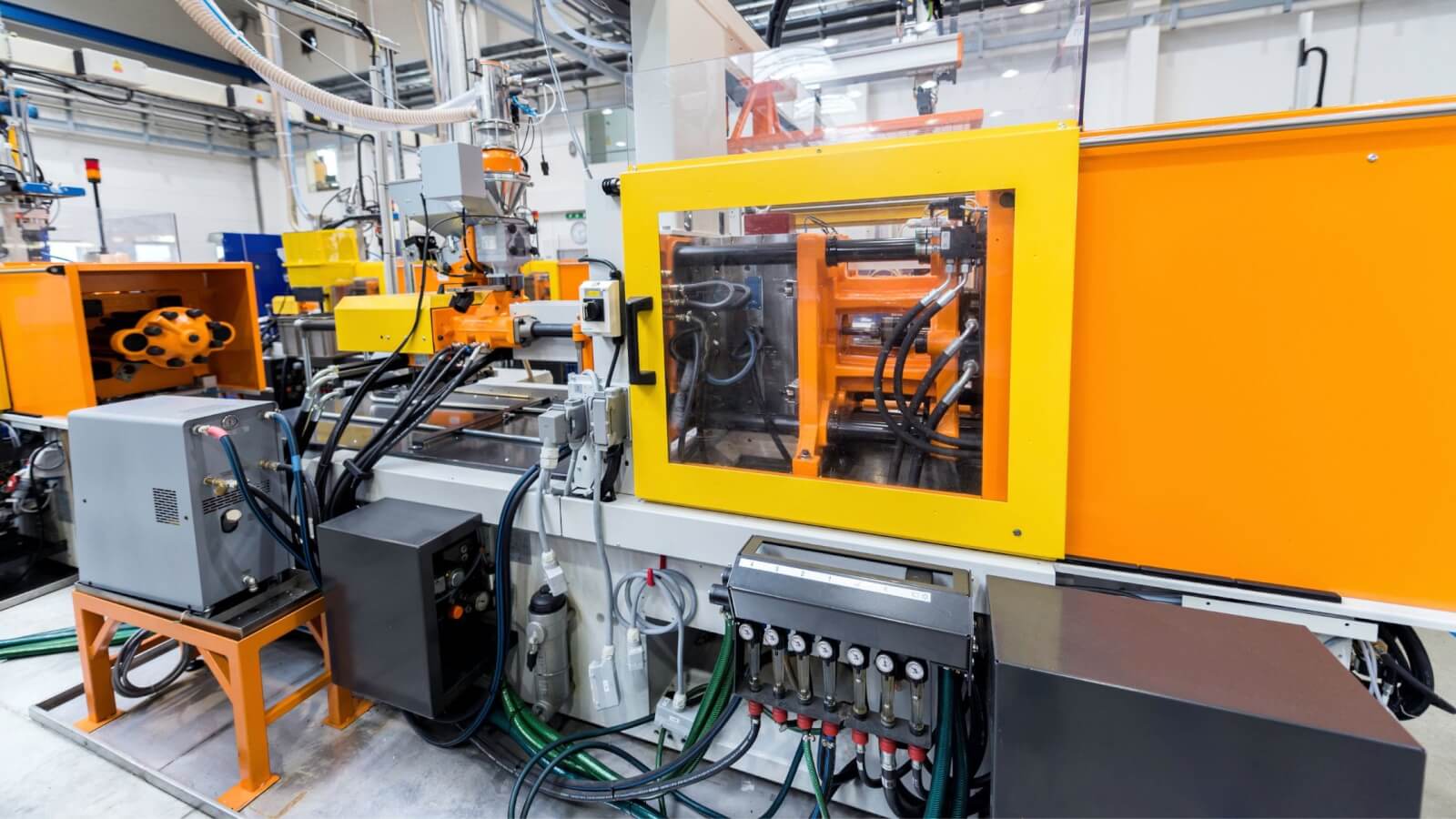Plastic Injection Molding: A Comprehensive Overview to Modern Manufacturing Techniques
Plastic Injection Molding: A Comprehensive Overview to Modern Manufacturing Techniques
Blog Article
Understanding the Fundamentals of Plastic Shot Molding Processes
Plastic injection molding functions as a keystone of modern manufacturing, supplying a systematic approach to creating complicated parts with accuracy. This procedure not just encompasses the fundamental steps of melting and injecting materials right into mold and mildews yet additionally entails a nuanced understanding of different influencing variables, such as temperature and pressure. As industries progressively require efficiency and high quality, the ins and outs of this technique come to be extra crucial. Checking out these necessary components might expose exactly how even minor modifications can cause considerable enhancements in production results, questioning about the potential for technology in this well-known procedure.
What Is Plastic Injection Molding?
Plastic shot molding is a commonly utilized manufacturing process that changes thermosetting and thermoplastic products right into exact and complex shapes. This strategy is favored for its capacity to produce high volumes of the same get rid of exceptional precision, making it an essential approach in various markets, consisting of automotive, consumer products, and clinical devices.
The procedure includes thawing the picked plastic material and injecting it into a mold and mildew under high stress. The mold, developed to the requirements of the wanted part, allows the molten plastic to form as it strengthens and cools down. Once the material has solidified, the mold and mildew is opened up, and the ended up part is expelled.
Plastic injection molding offers several advantages, including minimized waste, uniformity in manufacturing, and the capacity to include detailed layouts that might be testing with various other manufacturing methods. Additionally, it supports a broad range of materials, each providing distinct properties that can be tailored for specific applications. As industries remain to innovate, plastic shot molding continues to be at the center, making it possible for the growth of innovative items that fulfill progressing customer demands.
The Injection Molding Process
The shot molding procedure is an innovative method that includes a number of essential stages to generate high-quality plastic parts. Originally, plastic pellets are fed right into a heated barrel where they are merged a thick liquid. This molten plastic is then injected under high stress into a precision-engineered mold, which forms the product into the wanted kind.
When the mold is loaded, the plastic is enabled to cool and strengthen, taking the form of the mold dental caries. Air conditioning time is crucial, as it influences the cycle time and the last buildings of the molded part. After adequate cooling, the mold and mildew opens, and the ended up element is expelled utilizing ejector pins.

Products Utilized in Injection Molding
Different materials can be used in the injection molding procedure, each offering one-of-a-kind residential or commercial properties that provide to specific applications. The most commonly used materials include thermoplastics, thermosetting plastics, and elastomers.

Thermosetting plastics, like epoxy and phenolic resins, undertake a chemical change during the healing procedure, leading to an inflexible, stringent structure. These materials are excellent for applications requiring high warm resistance and architectural integrity, typically made use of in auto components and electric insulators.
Elastomers, including silicone and rubber-based materials, offer adaptability and strength. Their unique residential properties make them ideal for applications that require elasticity, such as seals and gaskets.
Furthermore, specialized products like bio-based plastics and compounds are getting grip for their ecological advantages and enhanced performance characteristics, broadening the scope of injection molding applications in various markets. Comprehending the residential properties of these products is critical for selecting the suitable type for particular jobs.
Advantages of Injection Molding
Injection molding stands out as a highly reliable production procedure that uses many advantages for creating complex parts with precision. Among one of the most substantial advantages is read what he said the capability to create intricate layouts that would certainly be difficult or impossible to accomplish with other methods (Plastic Injection Molding). The procedure enables comprehensive features and limited tolerances, ensuring high-grade parts
Furthermore, injection molding is recognized for its rapid manufacturing abilities, making it an optimal choice for high-volume production. Once the mold and mildew is produced, parts can be created rapidly, lowering preparations and increasing total productivity. This performance not just reduces production expenses but additionally offers an affordable edge in the marketplace.
The versatility of products utilized in injection molding further boosts its charm. A wide variety of thermoplastics and thermosetting polymers can be employed, enabling suppliers to choose products that best satisfy their details demands, consisting of flexibility, stamina, and warmth resistance.
In addition, the process reduces waste, as excess material can commonly be recycled and reused. This sustainability element adds to a lowered environmental effect, making injection molding a liable production selection. Overall, the advantages of injection molding make it redirected here a favored approach for several industries.
Factors Impacting Product High Quality
While countless variables can influence item quality in injection molding, understanding these elements is essential for accomplishing ideal results. Secret elements include material selection, refining specifications, and mold style.
Material choice plays an important function, as different polymers exhibit distinct residential properties that influence flowability, toughness, and thermal security. Insufficient material choice can lead to defects such as bending or insufficient dental filling.
Processing parameters, including temperature level, cycle, and pressure time, must be meticulously regulated. Variants in these settings can cause incongruities in component useful reference dimensions and surface area coating. Exceedingly high temperatures might trigger degradation of the polymer, while insufficient pressure can result in brief shots.
Mold layout is similarly important, as it establishes the flow of the molten plastic and the cooling process. Improperly developed mold and mildews may bring about unequal cooling prices, causing residual stress and anxieties and dimensional mistakes.

Conclusion
In final thought, plastic injection molding serves as a vital manufacturing process that enables the efficient manufacturing of high-quality components. Proficiency of the shot molding procedure, including the understanding of materials and the impact of numerous variables on item high quality, is vital for accomplishing optimal outcomes. The benefits of this technique, such as cost-effectiveness and design flexibility, more emphasize its relevance across multiple sectors, strengthening its status as a preferred selection for high-volume manufacturing.
Plastic injection molding offers as a foundation of contemporary manufacturing, giving a systematic method to creating complex parts with accuracy.Plastic injection molding offers numerous advantages, consisting of minimized waste, consistency in manufacturing, and the ability to incorporate complex designs that might be challenging with various other producing approaches (Plastic Injection Molding). As markets continue to introduce, plastic injection molding stays at the forefront, making it possible for the development of innovative products that fulfill developing customer demands
The shot molding process is an advanced technique that includes numerous essential phases to produce high-grade plastic elements.In verdict, plastic injection molding offers as a critical production procedure that enables the reliable manufacturing of premium parts.
Report this page